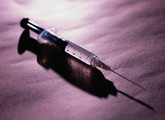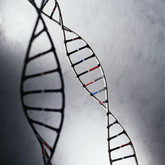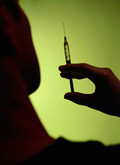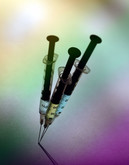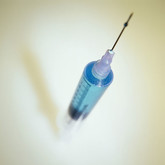Biosimilars
Improving the understanding of biosimilars through education
The process of introducing biosimilars into clinical practice is complex and involves many stakeholders. There are different strategies that healthcare systems have adopted to incorporate biosimilars into patient care. Regulators, payers, pharmacists, and physicians need adequate knowledge in order to be effective components of this process. Previous research in the region has shown a high prevalence of lack of understanding and major safety concerns on the use of biosimilars [1].
Canada approves insulin aspart biosimilar Trurapi
Canada’s drug regulator, Health Canada, has approved the insulin aspart biosimilar Trurapi.
Regulatory issues related to quality of biosimilars
The quality of biosimilars was one of the challenges identified from the results of a survey carried out by the World Health Organization (WHO) [1]. The survey, which was carried out in 2019‒2020, revealed that despite the efforts of WHO in helping Member States implement the evaluation principles in the WHO biosimilar guidelines [2] into their regulatory practices, challenges still remain.
China extends indications for adalimumab and bevacizumab copy biologicals
Chinese biopharmaceutical firm Innovent Biologics (Innovent) announced that China’s National Medical Products Administration (NMPA), formerly the China Food and Drug Administration (CFDA), has approved new indications for its adalimumab and bevacizumab copy biologicals.
Understanding and minimizing injection-site pain for biologicals
Biologicals have revolutionized treatment across a range of immune and inflammatory-related diseases and have had considerable impact on the health economy. Switching to a biosimilar has proven to be an effective, safe and pharmacoeconomically advantageous strategy for health systems.
Canada approves three teriparatide biosimilars in 2020
Canada’s drug regulator, Health Canada, has approved the enoxaparin sodium biosimilars Apo-teriparatide, Teva-teriparatide and Osnuvo.
Clinical evidence for interchangeability of biosimilars in the US
In the United States, the Food and Drug Administration (FDA) approval of a biosimilar is based on the ‘totality of the evidence’ from comparative analytical and functional assessments and comparative clinical (pharmacology, immunogenicity, safety and efficacy) assessments that support a conclusion of biosimilarity [1]. An approved biosimilar can also be designated as ‘interchangeable’ if it can be concluded that the biosimilar is expected to produce the ‘same clinical result as the reference product in any given patient’ and there is no increased risk in terms of safety or diminished efficacy associated with switching or alternating between the biosimilar and reference product (RP) [2]. With such designation, an interchangeable biosimilar could be substituted for its RP at the pharmacy level where state law allows [2].
EMA recommends approval of insulin aspart biosimilar Kixelle
The European Medicines Agency’s (EMA) Committee for Medicinal Products for Human Use (CHMP) announced on 11 December 2020 that it had recommended granting of marketing authorization for an insulin aspart biosimilar.
FDA approves rituximab biosimilar Riabni
US-based biotech giant Amgen announced on 17 December 2020 that it had received approval from the US Food and Drug Administration (FDA) for its rituximab biosimilar Riabni (ABP 798).
Biosimilars and lack of resources
The results of a survey carried out by the World Health Organization (WHO) in 2019‒2020 [1] revealed that, despite the efforts of the organization in helping Member States implement the evaluation principles in the WHO biosimilar guidelines [2] into their regulatory practices, challenges still remain. Lack of resources was one of the challenges identified from the results of the survey.

